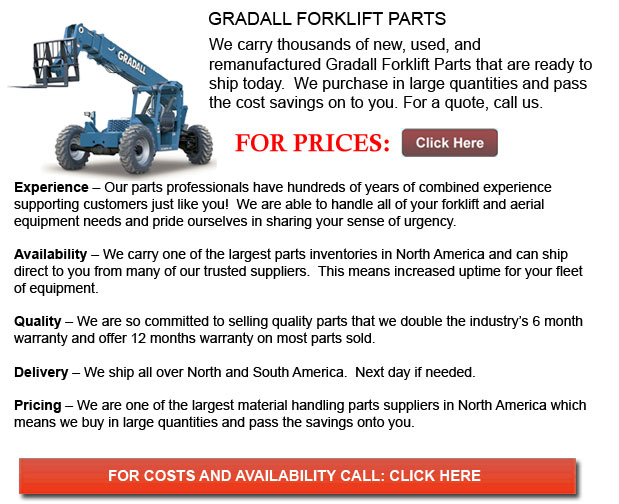
The Gradall excavator was the brainchild of two brothers Koop and ray Ferwerda. The excavator was founded In the 1940's all through WWII, when there was a scarcity of labourers. The brothers faced the problems of a depleted workforce due to the war. As partners in their Cleveland, Ohio construction company known as Ferwerda-Werba-Ferwerda they lacked the existing laborers to perform the delicate tasks of finishing and grading on their highway projects. The Ferwerda brothers opted to make an equipment that would save their company by making the slope grading work more efficient, less manual and easier.
The first excavator prototype consisted of a device with two industrial beams on a rotating platform fixed to a second-hand truck, similar to how the first forklift parts originated. There was a telescopic cylinder which was used to move the beams backward and forward. This allowed the fixed blade at the far end of the beams to push or pull the dirt. Before long enhancing the first design, the brothers built a triangular boom to be able to add more strength. As well, they added a tilt cylinder that let the boom rotate 45 degrees in either direction. A cylinder was positioned at the rear of the boom, powering a long push rod to allow the machinery to be equipped with either a bucket or a blade attachment.
1992 marked a crucial year for Gradall with their launch of XL Series hydraulics, the most amazing change in the company's excavators since their invention. These top-of-the-line hydraulics systems enabled Gradall excavators to provide high productivity and comparable power on a realistic level to traditional excavators. The XL Series put an end to the first Gradall equipment power drawn from low pressure hydraulics and gear pumps. These traditional systems effectively handled finishing work and grading but had a hard time competing for high productivity work.
Gradall's new XL Series excavators showed more ability to lift and dig materials. With this series, the models were produced with a piston pump, high-pressure system of hydraulics which showed marked improvement in boom and bucket breakout forces. The XL Series hydraulics system was even developed together with a load-sensing capability. Traditional excavators make use of an operator so as to select a working-mode; where the Gradall system can automatically adjust the hydraulic power intended for the work at hand. This makes the operator's general job easier and even saves fuel at the same time.
Once their XL Series hydraulics became available, Gradall was basically thrust into the highly competitive market of machinery designed to tackle excavation, demolition, pavement removal as well as different industrial jobs. Marketability was further improved with their telescoping boom because of its exclusive ability to work in low overhead areas and to better position attachments.
![]() Click to Download the pdf
Click to Download the pdf
Forklift Parts








Lift Parts Express Modesto
TOLL FREE: 1-888-695-7994
LOCAL: 209-343-9537
3430 Tully Road
Modesto, California
modestoforkliftparts.com
Email Us
About Us



